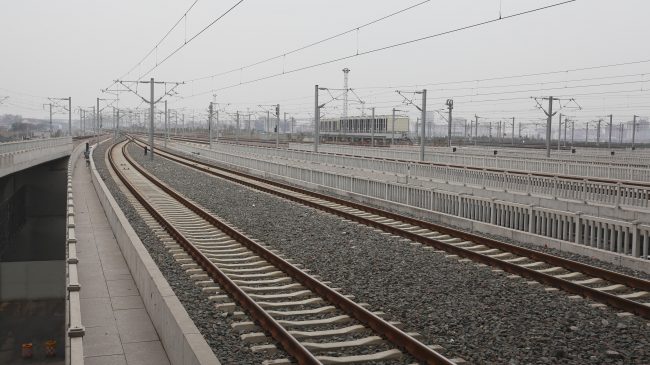Gov. Gavin Newsom has correctly called for rightsizing California’s high-speed rail project. While the state’s latest rail plan offers a step in that direction and is more realistic than previous updates, it is still flawed and requires further improvement.
By indefinitely postponing the proposed expansions to the Bay Area and Los Angeles, the revised plan lowers projected capital costs from $77 billion to $20.4 billion. However, the slimmed-down project promises to create a costly, money-losing rail line that offers limited transportation or social benefits to the Central Valley.
With construction well underway along the original 119-mile segment from Madera to Bakersfield, Gov. Newsom doesn’t view stopping construction and thus leaving a half-finished rail line to decay under the Central Valley sun as a feasible option. As a result, the next best option is to complete the Central Valley rail line using conventional rail. The California High-Speed Rail Authority could connect the 119-mile route from Madera to Bakersfield to the existing tracks used by Amtrak’s San Joaquins service and freight trains.
Unfortunately, the rail authority plans to add 52 miles to current 119-mile segment, which would expand the line to Merced in the north and downtown Bakersfield in the south. The northern extension, from Madera to Merced, adds $2.5 billion in taxpayer money to connect cities with populations of 66,000 and 83,000, respectively. These two cities are already served by Amtrak and a new high-speed rail line that runs roughly parallel to existing trains is not going to attract enough passengers to cover high-speed rail’s annual operating costs, let alone recoup the project’s construction costs.
Indeed, the rail authority’s documents, released on May 1, don’t offer a justification for this expensive add-on. A report furnished by the authority’s Early Train Operator (ETO) projects an increase of 825,000 riders along the full Bakersfield to Merced route if high-speed service starts in 2026. But the rise from Amtrak’s 846,000 San Joaquin line passengers in 2017 to an expected 1,671,000 riders in 2026 is not fully attributed to the addition of high-speed service. An unspecified proportion of this estimate is the result of a new Altamont Corridor Express (ACE) extension line providing commuter service to the Bay Area.
Further, the ETO puts a major caveat on its ridership projections, noting that the predictions “should not be relied upon solely for decision-making” and since it doesn’t own the modeling system it does not “have any control on the reliability of the data and the outputs from the models.” The projections were derived from the California High-Speed Rail Authority’s systemwide forecast model developed for the original Los Angeles to San Francisco route, a model that lacks the data necessary to make projections for the shorter Central Valley segment that serves much less populated areas.
Given these concerns, and the project’s history of problems, the state legislature should not authorize the high-speed rail extension to Merced unless the authority can provide a compelling cost justification that is based on a ridership forecast model developed specifically for this sub-project that can pass peer review.
It’s also troubling that the latest rail proposal contains other dubious expenditures, including continuing to spend taxpayer money on environmental reviews of the Bay Area and Los Angeles legs of the original line, which are now on indefinite hold. With Gov. Newsom postponing the Bay Area and Southern California portions of the plan, conducting environmental reviews in the hope that funding may later be found is wasteful. Since Newsom’s February announcement, the project’s long-term funding prospects have only become cloudier. The Trump administration has canceled a $929 million federal grant for the project and is seeking reimbursement of the $2.5 billion in federal funds California has already received for the rail system.
Newsom’s decision to postpone most of the system is the correct one but the current plan is still too costly. With funding in flux, a more credible plan would have a singular focus on completing the 119-mile segment already under construction as simply and inexpensively as possible. The state should not gamble any more money on this troubled initiative.
This column first appeared in the Orange County Register.


